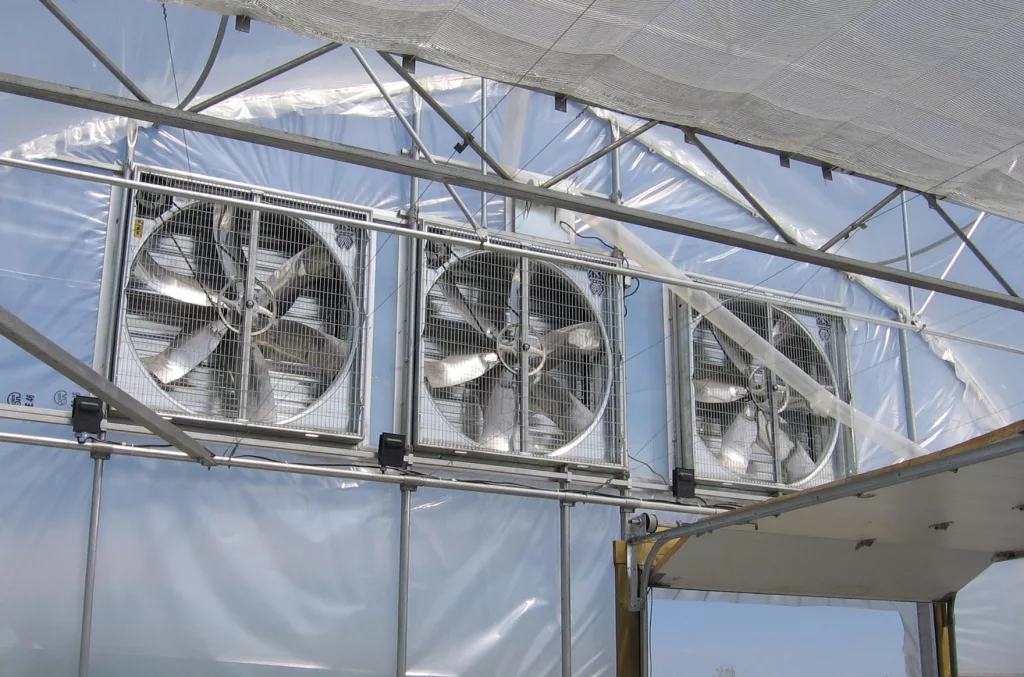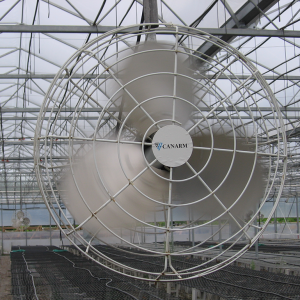Proper commercial greenhouse ventilation is one of the most important — and often overlooked — aspects of a successful commercial greenhouse. A well-designed ventilation system ensures healthy crop development, improves yield, and protects your structure from long-term damage caused by excessive heat and humidity.
In this guide, we’ll walk you through key tips for improving greenhouse ventilation, and explore the pros and cons of natural vs. mechanical systems — plus some advanced strategies to take your setup to the next level.
Why Ventilation Matters in Greenhouses
Ventilation isn’t just about keeping your greenhouse cool — it’s essential for maintaining the right growing environment. An effective system helps:
Control temperature and humidity
Prevent the buildup of plant pathogens and pests
Encourage strong plant growth by replenishing CO₂
Circulate fresh air to avoid dead zones and condensation
Whether you’re growing leafy greens, flowers, or high-value crops, proper airflow helps your plants thrive — and keeps your operational costs in check.
Natural vs. Mechanical Ventilation: Which is Right for You?
There’s no one-size-fits-all approach. The best system depends on your location, greenhouse design, and the crops you grow.

Natural ventilation
Natural ventilation uses roof vents, side vents, and thermal buoyancy to move air through the structure. It’s ideal for regions with mild temperatures and good wind flow.
Pros:
Energy-efficient and eco-friendly
Lower upfront and operational costs
Simple to maintain
Cons:
Less control in extreme weather
Depends heavily on climate and wind direction
May require larger openings to be effective
Mechanical ventilation
Mechanical systems use exhaust fans, intake vents, and circulation fans to regulate air movement. They’re especially useful in larger or climate-controlled greenhouses.
Pros:
Consistent performance regardless of outdoor conditions
Precise control over airflow and humidity
Compatible with automation systems
Cons:
Higher installation and energy costs
Requires ongoing maintenance and monitoring

Customizing Commercial Greenhouse Ventilation
Not all greenhouses are built the same, and ventilation strategies should reflect your structure type:
Gutter-connected greenhouses: Often benefit from mechanical systems for more uniform air distribution across bays.
Freestanding greenhouses: Can work well with natural ventilation, especially when using ridge and side vents.
High tunnels and hoop houses: Typically rely on roll-up sidewalls for passive ventilation, often combined with shading for additional temperature control.
Smart Ventilation Technologies
Commercial greenhouses are increasingly adopting smart automation for better efficiency and consistency. Consider:
Automated vent control: Sensors monitor temperature, humidity, and CO₂, adjusting vents and fans in real time.
Energy-efficient circulation fans: Strategically placed fans can prevent air stratification and reduce overall cooling demands.
Integrated climate control systems: Combine ventilation with heating, shading, and irrigation for a holistic environmental approach.
Maintenance Matters: Keeping Your System Efficient
A well-maintained system runs longer, costs less, and protects your investment. Here’s what to keep in mind:
Inspect fans, vents, and motors regularly for wear or blockages
Clean intake screens and louvers to ensure smooth airflow
Check that automation systems are calibrated and responsive
Adjust your ventilation settings seasonally to match changing outdoor conditions
Want Help Designing the Right Ventilation System?
At Harnois Greenhouses, we specialize in custom greenhouse solutions tailored to your crops, climate, and long-term goals. Whether you need natural airflow optimization or a fully automated mechanical setup, we’re here to help.
Contact us today to get expert advice and a quote for your project.
